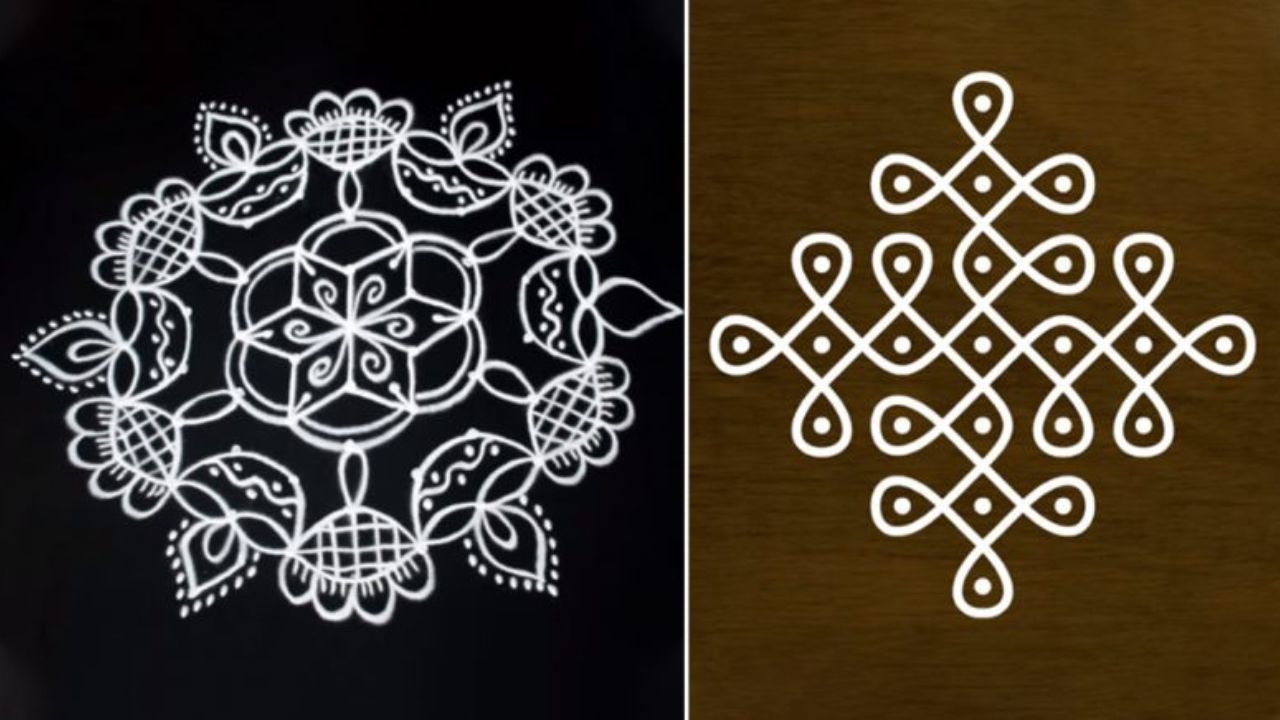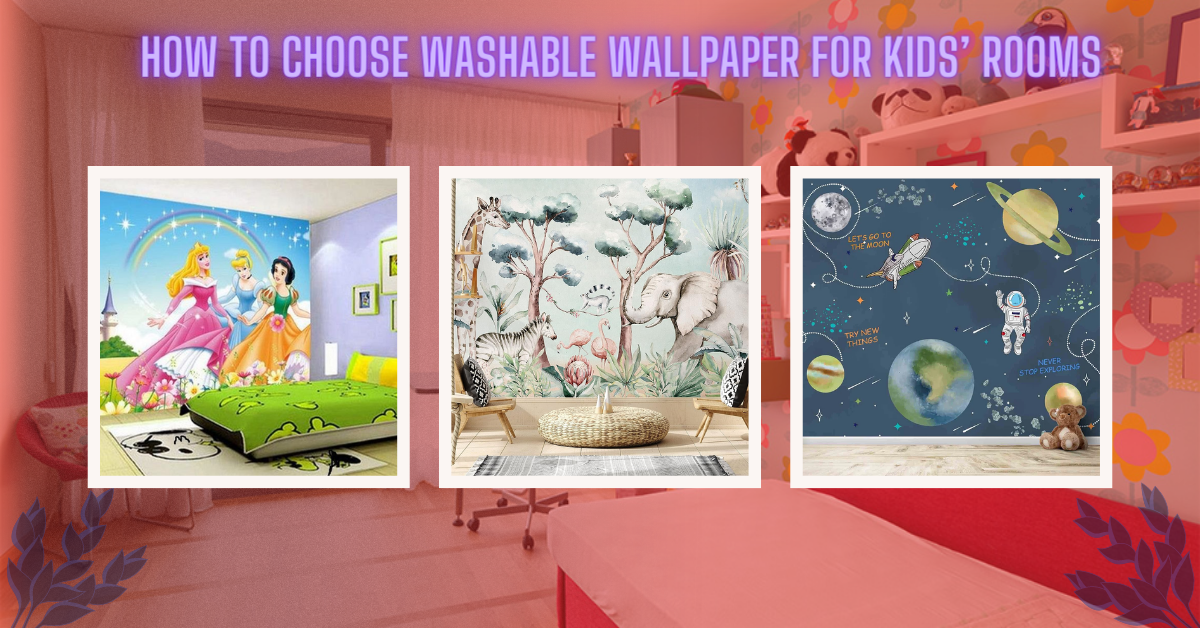Adding a touch of colour and culture to your home has never been this simple.
In the heart of India, the tradition of adorning homes with exquisite rangoli designs is deep-seated. Especially during festive occasions, the intricate patterns of rangoli breathe life, vibrancy, and a dash of charm into our living spaces. And among these myriad designs, the ones with dots hold a special allure. By simply connecting the dots, these rangoli designs can range from being elegantly monochrome to a riot of colours.
Whether you’re a rangoli novice or a seasoned enthusiast, there’s something for everyone in the dotted world. While some designs are straightforward and quick to craft, others might demand a tad more finesse and patience. But here’s the good news: with persistence and a dash of creativity, mastering these dotted rangoli patterns is within reach.
So, pop the kettle on, make yourself a comforting cup of tea, and scroll through our curated collection. Be it to draw inspiration or to adapt a design with your unique twist, dive in and let the world of dots and colours enchant you.
Dotted Rangoli Designs to Elevate Every Occasion
Geometric Mastery: Embarking on a journey into the intricate world of geometry, this design demands a keen eye for detail. Showcasing overlapping motifs, it’s the interplay of shapes that makes this rangoli stand out. Patience and persistence are your best friends with this one. For a beginner’s tip: sketch out your design on a dotted grid paper first, allowing yourself the freedom to experiment and innovate.
Difficulty: Complex
Octagonal Beauty: Steering clear from the traditional rounds and squares, this rangoli celebrates the elegance of the octagon. While the central floral motifs offer simplicity, connecting them with dots elevates the complexity. It’s a design that marries tradition with a touch of modernity, making it a perfect piece for those looking to experiment.
Difficulty: Complex
Floral Delight: A refreshing break from the complex, this design is a warm embrace of simplicity. Crafted mainly with dots, its floral patterns radiate a sense of warmth and homeliness. This is ideal for rangoli beginners or for those moments when you’re looking for a quick, yet beautiful design to enhance your space.
Difficulty: Simple
South Indian Kolam Magic: A dance between floral and geometric patterns, this design is a tribute to the traditional Kolam patterns of South India. Its uniqueness lies in the striking white motifs against a bold black backdrop, ensuring it becomes the centrepiece of any celebration. Though it requires a fair bit of skill, the results are undoubtedly worth the effort.
Difficulty: Complex
Peacock Panache: An introduction to the world of rangoli couldn’t be more vibrant! The delightful dance of peacock motifs and blossoms, using dots as guides, makes for a visually arresting design. Its varied colour palette adds to its allure, making it a standout even amidst simple designs.
Difficulty: Beginner
Nature’s Melody: With a central theme of leaves and flowers, this design seems to capture nature’s essence on your very floor. While it may look intricate at first, the lack of interconnected motifs offers a friendly space for learners. A touch of patience, and this design will bloom under your hands.
Difficulty: Moderate
Echoes of the Sacred Sankha: Rooted deep in India’s spiritual tapestry, the Sankha or conch is an emblem of purity and divinity. This design celebrates the Sankha with twelve harmoniously arranged motifs: six forming a floral heart, and the rest encircling it in devotion.
Difficulty: Moderate
Minimalist Magic: For those seeking simplicity without compromising on beauty, this rangoli offers just that. A diminutive design with dots at its core, it’s perfect for quick decorations. A few dots, a few connecting lines, and voila – you have a rangoli ready to charm.
Difficulty: Beginner
Geometric Grandeur: At first glance, it’s a maze of intricate patterns, but delve deeper and you’ll find rhythmic geometric shapes at play. This square-centric design, with floral motifs blooming at its heart, is a testament to the beauty of precision and patience.
Difficulty: Moderate
Floral Fantasy: A masterpiece in the realm of dotted rangoli designs, this intricate tapestry of floral patterns is nothing short of a showstopper. Every curve, every line, every petal demands attention to detail. Especially suited for grand occasions like Ugadi, this design promises to grace the threshold of your home with unparalleled elegance.
Difficulty: Complex
Lotus Luminary: Dive into the world of rangoli with this delightful portrayal of the Lotus, a symbol of purity and rebirth. With dots forming the foundation, four graceful lotus motifs create a symphony, encircling a simple floral heart. Ideal for Diwali, let this design illuminate your home.
Difficulty: Beginner
Kolam’s Elegance: Tracing its roots to the Kolam festival, this rangoli is a celebration of tradition. Boasting a central bouquet of flowers, it’s further accentuated by four lotus motifs. Although it requires some finesse, with patience, it’s a fitting addition to Ugadi celebrations.
Difficulty: Moderate
Stellar Floral: A constellation of florals in a star-shaped ensemble, this rangoli is nothing short of breathtaking. Its intricate centre stands as a testament to the artist’s craft. Certainly not for the faint-hearted, this design challenges even the seasoned rangoli makers.
Difficulty: Complex
Geometric Grace: Simple yet striking, this tipka rangoli is a harmonious blend of basic geometric forms blossoming into flowers. Perfect for those taking their first steps in the world of rangoli, it offers an avenue to experiment and colour inside or outside the lines.
Difficulty: Beginner
Swan Soiree: A stellar centrepiece evolves into a spectacular dance of six swans, swirling in harmonious rhythm. The swan motifs, crafted through the dotted technique, add a twist of creativity. While intricate, a few practices can transform any novice into a confident artist with this piece.
Difficulty: Moderate
Blossom Breeze: For those in a dash or new to the art, this floral design offers a breather. Simple, elegant, and effortlessly charming, it’s an epitome of quick artistry. Ideal for religious occasions like Diwali, it promises to bless any space with warmth and grace.
Difficulty: Beginner
Kaleidoscopic Craft: Dive deep into a mesmerising fusion of geometric, floral, and traditional themes. While not a walk in the park for newcomers, its intricacies promise a satisfying journey for those who dare. The centre’s captivating geometry and the defined outer patterns truly deserve applause. Ready to grace any festive occasion, it’s sure to be a crowd-pleaser.
Difficulty: Moderate
Geometric Grandeur: Straying from the norm, this Rangoli showcases the sheer elegance of pure geometry. Crafted meticulously by connecting dots with pristine lines, its simplicity is its greatest strength. Newbies will adore this piece, not just for its ease, but for the understated charm it brings to any setting.
Difficulty: Beginner
Hexagonal Haven: Unveiling a striking hexagonal heart, this design dances between the delicate lines of geometry and artistry. Its central star motif is beautifully complemented by surrounding patterns, crafting a piece that, while simple, never fails to intrigue. Beginners, this one’s for you, especially if you’re looking to leave guests chatting away about your creative flair!
Difficulty: Beginner
Circular Symmetry: A visual testament to the beauty that lies in simplicity. Encased within a defined circle, basic geometric forms like circles and triangles unite to create a Rangoli that’s both minimalistic and delightful. It’s an ode to those moments when less truly is more, and is perfect for rangoli beginners eager to make their mark.
Difficulty: Beginner
Ornate Spotlight: A delightful, easy-to-craft Rangoli that serves to accentuate any spot of choice. Its versatility makes it apt for a variety of occasions and settings. Picture this: a tranquil Diwali night with this design serving as the base for a vessel carrying floating flowers and radiant candles. Its ease of crafting means even those new to Rangoli can create this masterpiece.
Difficulty: Beginner
Swan Symphony: Step into a serene setting featuring a pair of elegant swans. Complemented by simplistic floral motifs, this design strikes the perfect balance between grandeur and simplicity. Though slightly expansive, with a dash of patience and practice, this design is attainable for most.
Difficulty: Beginner
Blossom Blueprint: Embodying the essence of simplicity, this floral Rangoli is versatile to the core. It can stand alone or merge seamlessly with other designs to craft a larger Rangoli canvas. Its universal appeal and simplistic charm make it accessible to even the greenest of Rangoli artists.
Difficulty: Beginner
Swan Saga with a Geometric Twist: Delve deep into a design where swans, symbols of grace, intermingle with intricate geometric motifs. The multiple layers and details, ranging from the defined contours of the swans to the nuanced geometric patterns, require a seasoned hand and an eye for detail.
Difficulty: Complex
Butterfly Bliss: An enchanting escape to nature, this design captures the fluttering beauty of butterflies as they dance around a central floral motif. The design’s clarity and lack of intricate details make it a favourite for beginners. The butterflies infuse an element of freshness and vivacity, making it a cheerful choice for any occasion.
Difficulty: Beginner
Rangoli: The Artistic Tradition of India
Rangolis are vibrant, intricate patterns traditionally adorned outside homes and venues in India. Their captivating designs, coupled with bright colours, make them an integral part of the Indian cultural canvas. Whether you’re a novice just starting out with simple designs or an expert adept at intricate patterns, the world of rangoli offers something to pique everyone’s interest.
These patterns, often symmetrical in nature, are a blend of geometric designs and elements inspired by nature. Depending on your expertise and patience, you can opt for simpler designs or challenge yourself with complex, multi-dot patterns. The beauty of rangoli lies in its adaptability: you’re always free to infuse your personal touch, whether by experimenting with colours or adding elements like flower petals.
Frequently Asked Questions
What materials are needed for making rangoli designs with dots?
Answer: For crafting a rangoli with dots, you’ll need a design in mind, white kolam powder (usually made from rice flour), and coloured rangoli powders. To enhance the aesthetic appeal, you can also use flower petals, diyas (traditional Indian lamps), or even poster colours.
How to choose the right colours for a rangoli design with dots?
Answer: The sky’s the limit when it comes to choosing colours for your rangoli! Incorporate natural elements like flowers, leaves, and spices to infuse vibrancy and life into your design. Typically, the colour black is avoided during Indian festivals, as it’s not considered auspicious.
What are the safety precautions to be taken while creating rangoli designs with dots?
Answer: To ensure a safe rangoli-making experience, it’s best to use homemade colours, crafted by mixing sand or dry rice flour with spices like turmeric or food colours. This not only ensures the purity of the colours but also keeps harmful chemicals at bay. Additionally, if you’re making rangoli tools at home, ensure they’re devoid of sharp edges to prevent accidental cuts or injuries.
What are the most common colours used in rangoli designs with dots?
Answer: Rangolis predominantly feature bright, eye-catching colours. Commonly used hues include red, blue, yellow, green, pink, orange, and purple. These colours not only enhance the visual appeal of the design but also hold cultural significance in many Indian festivities.
Embrace the world of rangoli and let your creative spirits soar. Every design you craft will be a testament to tradition, creativity, and the sheer joy of artistic expression.





